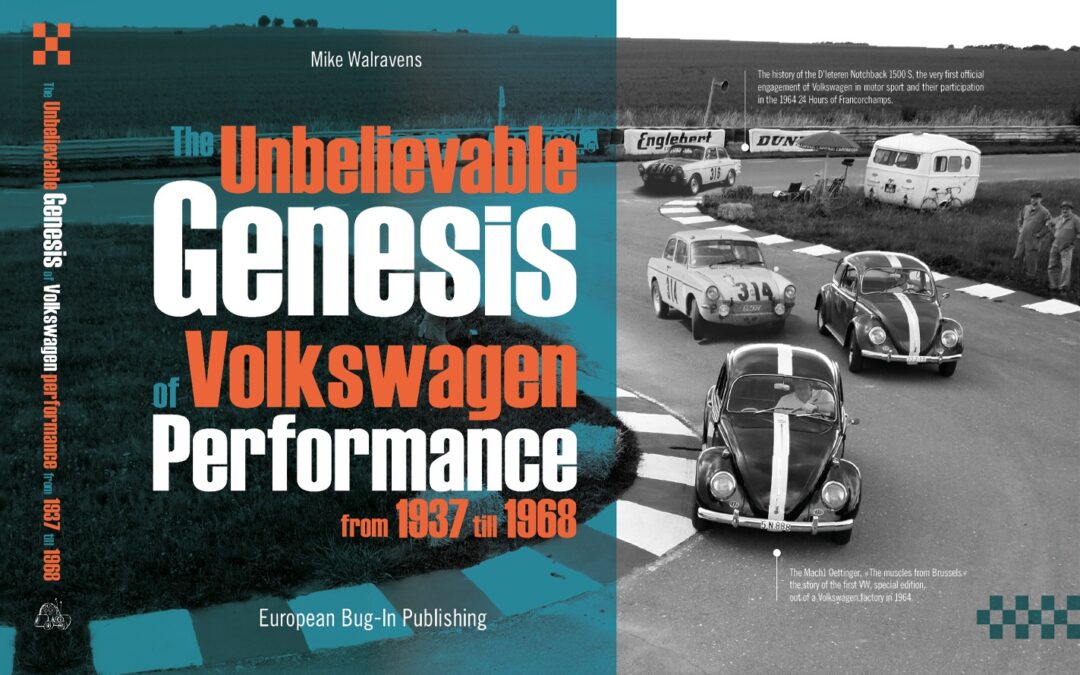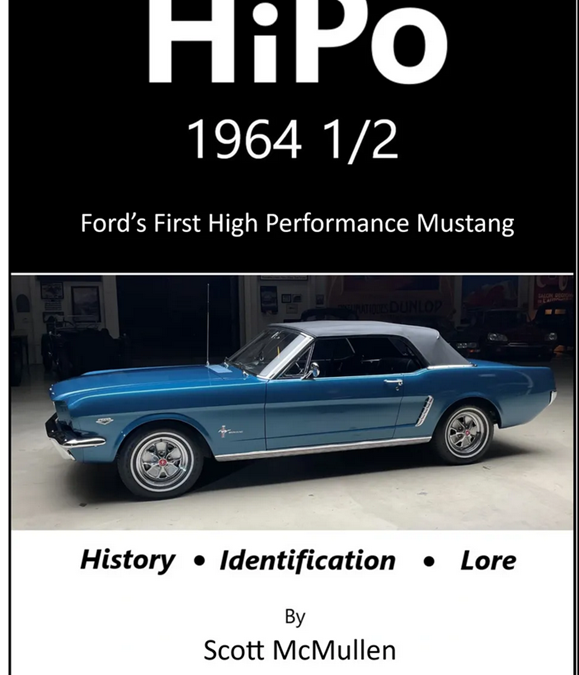
Introducing “HiPo 1964 1/2 Ford’s First High Performance Mustang – History, Identification, Lore”. Dive into the thrilling world of Ford’s iconic 64 1/2 K code Mustang with captivating stories and stunning visuals. A must-have for every auto enthusiast!
The authoritative guide to Ford’s original street legal race-bred Mustang and one of the world’s rarest collector cars, whose fascinating story is sure to entertain a wide range of automotive enthusiasts – not just Mustang fans – covering history, early prototypes, development/testing, production, characteristics/parts, restoration/preservation, and much more. (Hardcover, 347 pages, 157 photos/images both color and black & white.) By Scott McMullen with foreword by Jay Leno.
“HiPo 1964 ½ Ford’s First High Performance Mustang” focuses on one of Ford’s rarest production cars – rarer than the 1965-1966 Shelby GT 350 and the only option for Mustang performance buffs prior to August 1964. Also known as HiPos or K codes, most enthusiasts are aware of the 65-66 models, but little about the 64 ½ HiPo Mustangs, has been available. The 64 ½ cars were the original embodiment of the street legal race-bred Mustang. Their fascinating story is sure to entertain a wide range of automotive enthusiasts – not just Mustang fans.
The book includes rare, and in some cases, never-before-published pictures of early High Performance Mustang prototypes and pre K code mustangs production cars. Included are details of experimentation and production along with in-depth discussions of how research and development progressed through the start of 64 ½ K code production up to the start of 65 production. Also explored is the lore of these classic muscle cars and the test drivers, like Dan Gurney, who helped wring them out.
This information is invaluable to the collector and automotive performance enthusiast alike. Even the most knowledgeable Mustang aficionado will find new information, some of which will challenge old notions and lore that has been told through generations of Mustang fans the world over. The book goes on to present tips for preserving and restoring a 64 ½ HiPo Mustang. It further delves into characteristics of an authentic 64 ½ K code Mustang along with how they changed through the few weeks in 1964 that these ultra rare cars were produced.
Hardcover, 347 pages, 157 photos/images both color and black&white.
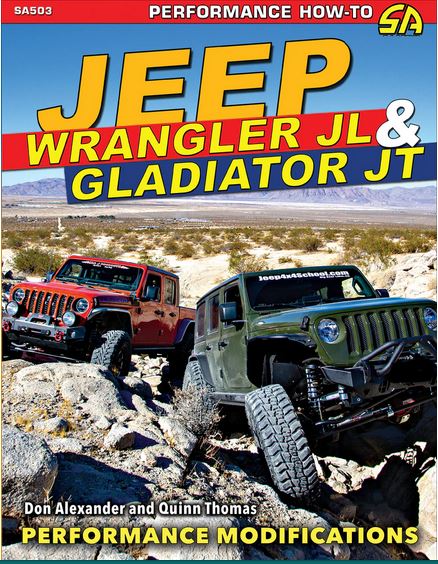
Learn your modification options for the most modern and exciting Jeeps!
Going back to World War II, Jeeps have had a special place in America’s heart. The utility vehicle that helped win the war transitioned into the civilian Jeep, or CJ, and the Jeep brand has had several owners over the years. While still remaining wildly popular, it has evolved. The Wrangler version of the Jeep was transformed with the release of the JK for the 2007 model year. With a more practical 4-door version, this Wrangler became a popular vehicle for year-round use, which appealed to off-roaders as well as soccer moms. For the 2017 model year, Jeep seriously upgraded the Wrangler, which is now dubbed the JL, and added an exciting new model, the Gladiator, or JT, which is essentially a pickup version of the Wrangler.
In Jeep Wrangler JL and Gladiator JT: Performance Modifications, Jeep experts Don Alexander and Quinn Thomas introduce you to these new models and walk you through the capabilities and options for all of the trim levels. Then, they examine how to make these things better, system by system. Suspension, steering, and brakes are covered, as they are the heart of any off-road rig. Also examined are modification options for axles, driveshafts, and differentials as well as bumpers, armor, and protection. Of course, off-roaders need a quality winch, recovery gear, and upgraded electrics, so options are explored here as well. Wheels and tires are also very important for those leaving paved roads, and upgrade options for all of the trim levels and lift levels are covered thoroughly.
Whether you want to build a JL or JT to be a serious rock crawler or simply look like you are going off-road, all of your options are thoroughly explained in this book. Add a copy to your Jeep reference library.
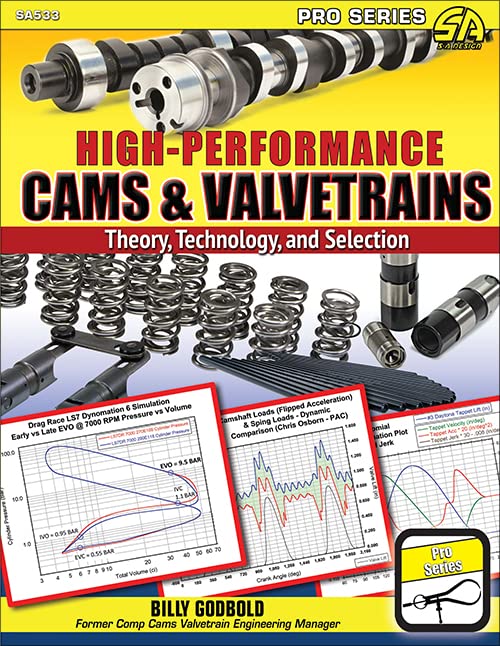
Understand the “magic” of how optimized camshafts extract the most performance from every engine component, eliminating valvetrain guesswork.
Camshafts are the coach and conductor of any four-stroke engine from early flatheads to modern Formula 1. Performance engines are amazingly sensitive to how and when the valves to the combustion chamber open and close. The valvetrain configuration and flow characteristics may change significantly between applications, but the fundamental principles are universal. This allows the language, setup, dynamics, energy, and pressure aspects of a valvetrain to be covered in a way that is just as useful for optimizing a sub-15-hp go-kart engine as it is on a 500-plus-hp street engine or modern 1,500-plus-hp NHRA Pro Stock engine.
In High-Performance Cams and Valvetrains: Theory, Technology, and Selection, farm-kid-turned-physicist Billy Godbold combines his quarter-century of experience with valvetrains at Comp Cams, Lunati, Crane Cams, and Edelbrock with the techniques he uses with professional teams in NASCAR, the NHRA, road racing, dirt-track racing, offshore racing, and land speed racing. He guides you to think about any valvetrain system with his perspective. Often lighthearted and filled with analogies, this book endeavors to make complex concepts easy to understand without watering down important details.
Specific configurations and applications are covered, providing techniques and examples for optimizing camshafts and the valvetrain around intakes, headers, superchargers, turbochargers, fuels, carburetors, and modern EFI applications. If you are planning or building a performance engine, or if you just want to know the science behind how cams and valvetrains work, this book is an indispensable resource.

Realize your Ford Coyote engine’s full potential by using this detailed resource as a guide to select the right parts for the street or the strip.
Veteran Ford writer and historian, Jim Smart, explains and highlights all of the latest and greatest options to achieve more horsepower and torque, and of course, faster quarter-mile times in Ford Coyote Engines: How to Build Max Performance-Revised Edition.
In this Revised Edition, now covering Generation III engines as well as Generation I & II, upgrades included are engine building techniques, cold-air induction kits, supercharger and pulley kits, better exhaust headers, fuel system and ECU tuning upgrades, and more. Both Ford and the aftermarket have produced an array of parts to squeeze even more power out of your Coyote.
Ford introduced its first “clean slate design” V-8 engines in the early 1990s in Ford, Lincoln, and Mercury models. Known as the “Modular” engine family, the 4.6L engines employed new overhead cams, multi-valve performance, distributorless ignition, and more. This engine had new technology for its time, and it proved to be an extremely durable workhorse that logged hundreds of thousands of miles in police and taxi applications as well as light-duty trucks. And, of course, hotter versions, and even supercharged versions, found their way into performance applications such as Mustang GTs and Cobras.
By 2011, Ford wanted something hotter and more current, especially for its flagship Mustang GT and GT350 models, which were suddenly competing with new 6.2L LS3 engines in Camaros and 6.4L Hemi engines in Challengers. Enter Ford’s new 5.0L “Coyote” engine with Twin Independent Variable Cam Timing (Ti-VCT); it was an evolution of the earlier 4.6L and 5.4L Modular designs. Although the new Coyote engine had increased displacement, it still had far fewer cubes than the competition. Despite less displacement, the Coyote could hold its own against bigger Chevy and Chrysler mills thanks to advanced technology, such as 4V heads with better port and valvetrain geometry. The Coyote is also Ford’s first foray into technology that includes Ti-VCT and cam-torque-actuated (CTA) function, which is a fancy way of saying variable cam timing for an incredible power curve over a broader RPM range. Now, in Generation III, Ford has implement a system using both Port and Direct Fuel Injection, taking advantage of the benefits of both systems in a single application.
Even with all of this new technology, there is always room for improvement. If you are looking for even more power from your new Coyote, look no further than this volume.
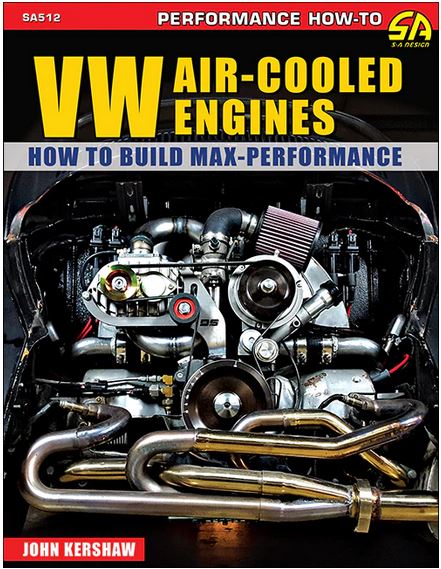
The VW Beetle (officially the Volkswagen Type 1) needs no introduction. Manufactured and marketed globally by Volkswagen from 1938 to 2003, more than 21 million were produced and sold around the world. Extremely popular in the US and Europe during the 1950s and 1960s, increasing competition from Japanese, American, and European manufacturers as well as stiffening demands for better safety and emissions contributed to a sharp decline in sales in the early 1970s. The Beetle was manufactured in much smaller numbers in Germany until the late 1970s, when production shifted to Brazil and Mexico, where operating cost was a was a large factor in keeping the Beetle alive. While simple and fun, the Beetle had simply become outdated.
Of course, the enthusiast market did not see it that way. Aficionados loved the simplicity in the design as well as its aesthetics and enjoyed tinkering with the mechanicals of their Beetles, Buses, Type 3 models and Karmann Ghias. There is no shortage of options when customizing your Beetle, and for many, extracting as much performance out of their air-cooled flat 4 was the way to go. Not only does it remedy the issue of keeping up with modern traffic but Beetles also respond really well to modifications and have a robust aftermarket to support them.
In VW Air-Cooled Engines: How to Build Max Performance, VW veteran Dr. John F. Kershaw lays the groundwork for getting the most possible power for your desired use and application. Covered here are all the various power levels and components to get you there. It’s all here: rotating assemblies, cylinder heads, cams and the valvetrain, engine blocks, ignitions systems, fuel injection, carburetors and induction, exhaust, sources for parts, and even turbos and superchargers.
Are you looking for just a little more power to keep up with traffic or maybe a streetable high-performance machine? Perhaps you are interested in a little street/strip action or even all-out racing applications. All of your options are examined in this book. Add it to your air-cooled library today.
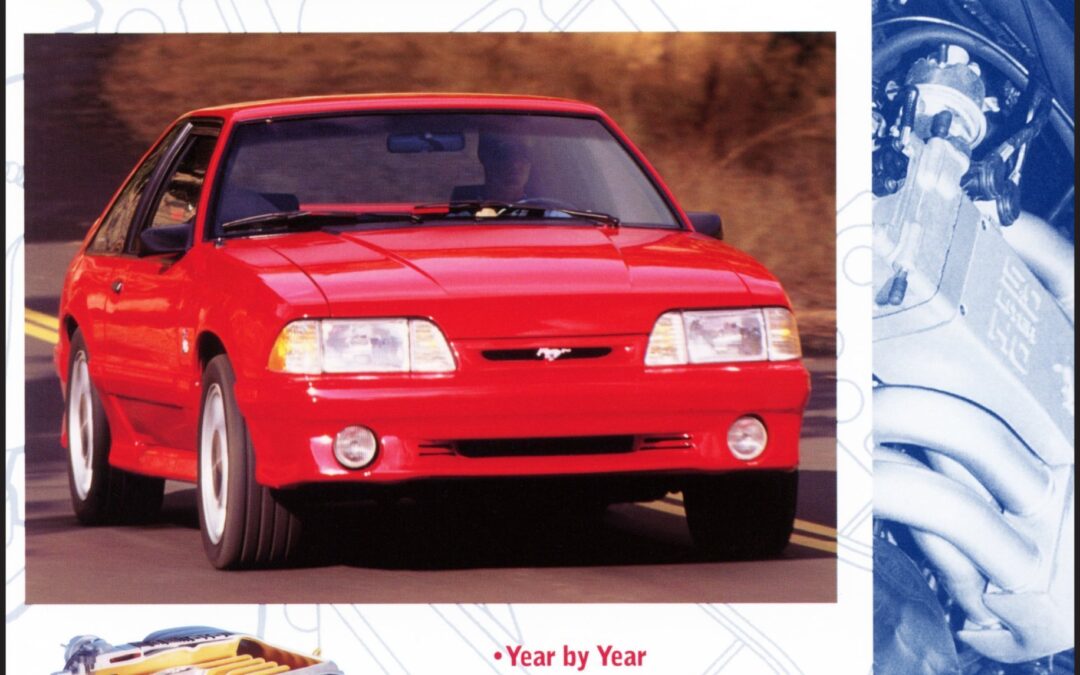
The Official Ford Mustang 5.0 Technical Reference & Performance Handbook View is the number-one data source for V-8 Mustang and Capri owners. It contains all the data you need to master a V-8 Mustang’s major mechanical workings. Most importantly, the Handbook provides you with the crucial keys to your car’s performance potential. And it features all the popular treatments and modifications that third-generation V-8 Mustang owners and tuners have found to be most effective.
Features
- Complete door tag and VIN translations, plus V-8 engine, transmission and rear end codes.
- A year-by-year (1979-93) review of what Ford built, with a breakdown of powertrain and driveline specs for V-8- Ford Mustang and Lincoln-Mercury Capri models. Restorers! Read this reference guide before you turn a wrench.
- Critical specs and detailed data on all production 5.0-liter H.O. and GT-40 engine hardware including, blocks, cranks, pistons, rods, heads, cams, intake, ignition, exhaust and cooling systems, as well as all factory-fitted transmissions and rear ends, plus suggested upgrades.
- Complete specifications on original equipment suspension, braking and steering systems, as well as popular improvement paths and equipment.
- Comprehensive coverage of the limited-production 1993 Mustang Cobra and the already rare 1993 Cobra R-Model.
- A complete review of Fox-body Mustang police cars, with detailed discussions of their Special Service systems and equipment.
- Parts and systems replacement references include interchangability, conversions, and swaps. Hands-on tips and tricks reveal low-cost horsepower sources. Analysis of the most effective approaches to improving a 5-liter Mustang�s output: supercharging, nitrous-oxide, turbocharging and increased displacement.
- Owners of 5-liter 1994-95 V-8 Mustangs and 1996-and-later Explorers and Mountaineers will find applicable cross-over data in the coverage of Ford’s fuel-injected small block V-8.
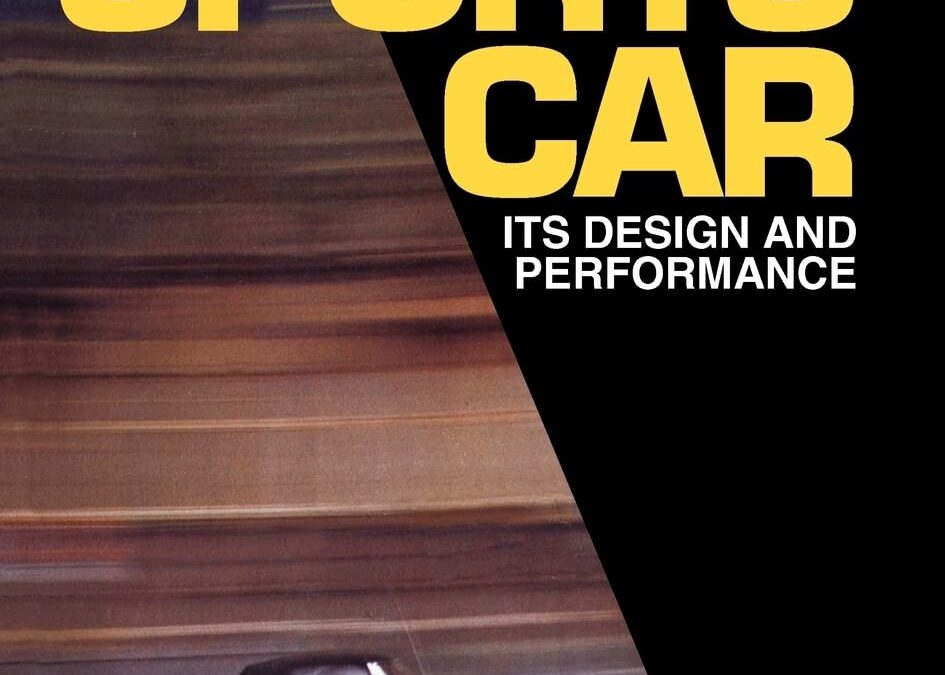
Colin Campbell offers a thorough and systematic examination of some of the finest achievements in sports car design through the late seventies. His technical survey spans engine and valve train designs, tire and suspension considerations, chassis construction, brakes, and standards of performance. Of particular value and interest-especially to design engineers working on new car projects-is the section containing detailed design studies on outstanding production sports cars from four manufacturers: Jaguar, Lotus, Mercedes and Porsche. By pointing out design features that are of particular merit with regard to overall performance, this book should also prove highly useful to readers who are choosing and preparing a car for Showroom Stock racing, or who are designing their own sports cars.
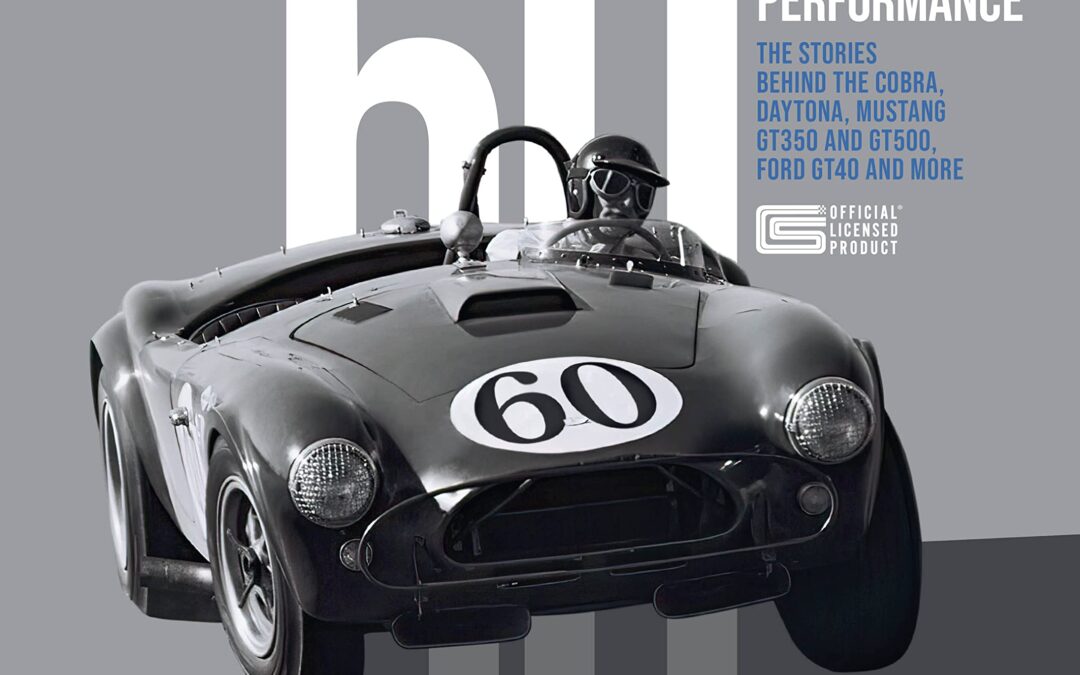
Six Decades of Shelby performance—from the first Shelby AC Cobra to today’s Mustang Shelby GT500!
A bad heart forced Carroll Shelby, one of the top racing drivers of all time, to retire in 1960. But that didn’t stop the lanky Texan from continuing to make history. He launched Shelby American in 1962 with the creation of the brilliant Ford-powered AC Cobra, soon to dominate both U.S. and international sports car racing. Shelby’s winning ways soon led to Ford seeking Shelby’s team of “hot rodders” help to make the Ford GT program a success. It worked. Shelby and Ford soon stunned the motorsports world by winning Le Mans and dominating other venues from 1966 to 1969 with the GT40. Fifty-three years later the legendary first Le Mans win of 1966 would form the basis for the acclaimed film Ford Versus Ferrari. As if the Cobra, Daytona Coupe, and GT40 were not enough, this small team of hot rodders, fabricators, and race mechanics also created the Shelby Mustang GT350 in 1965, and the GT500 two years later. Shelby American was nothing short of lightning in a bottle from 1962-1970.
Shelby American 60 Years of High Performance covers all of these early triumphs, following the proceedings from a small shop in Venice, California, to sprawling digs at LAX all the while developing new road cars, running a top race team, and giving privateer racers the cars they needed to win. Get to know Shelby, as well as the innovators who surrounded him, including designer Peter Brock, genius engineer Phil Remington, “Mr. GT350” Chuck Cantwell, and a roster of top drivers that included Ken Miles, Bob Bondurant, Dan Gurney, Bruce McLaren, Denny Hulme, A.J. Foyt, Mario Andretti, and more.
Authors Colin Comer and Rick Kopec, leading Shelby historians, follow the Shelby story through Carroll’s post-Ford relationship with Dodge, including his roles in the giant-killing, pocket-rocket Shelby Charger, GLH (“Goes Like Hell”), and GLH-S cars along with a slew of other Shelby-ized machines including his role in the birth and development of the menacing Dodge Viper.
The story of the late Carroll Shelby and the company he founded is a classic tale of ingenuity, grit, and perseverance. Illustrated throughout with rare period imagery and modern color photography, Shelby American 60 Years of High Performance is the ultimate tribute to Shelby American and the team that made it all happen.
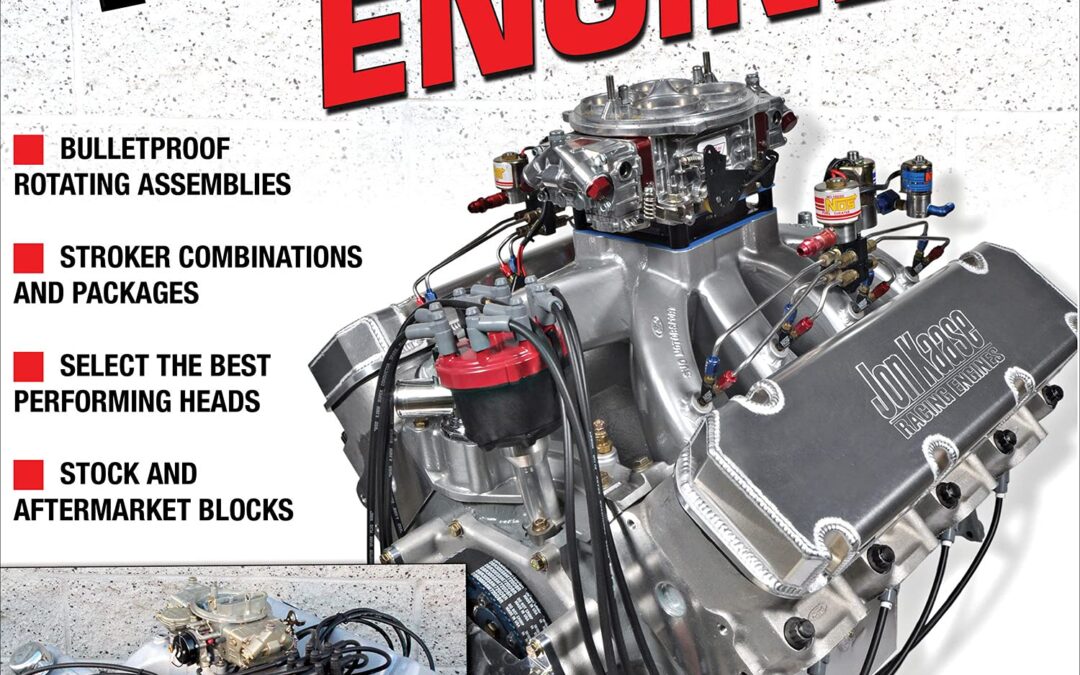
Learn to make incredible horsepower from Ford’s most powerful big-block engine design.
For years, Ford relied on the venerable FE big-block engine design to power its passenger cars, trucks, and even muscle cars—and why not? The design was rugged, reliable, amortized, and a proven race winner at Le Mans and drag strips across the country. However, as is always the case with technology, time marches on, and Ford had a new design with many improvements in mind. Enter the 385 family of engines (also known as the “Lima” big-block). Produced from 1968–1998, the 385-series engines were used in multiple applications from industrial trucks to muscle cars and luxury cruisers.
In Ford 429/460 Engines: How to Build Max Performance, which was written by Ford expert Jim Smart, all aspects of performance building are covered, including engine history and design, induction systems, cylinder heads, the valvetrain, camshaft selection, the engine block, and rotating assemblies. The best options, optimal parts matching, aftermarket versus factory parts, budget levels, and build levels are also examined. The 429/460 engines are a good platform for stroking, so that is covered here as well.
Whether you want to build a torque-monster engine for your off-road F-150, a better-preforming version of a 1970s-era smog motor for your luxury Lincoln, or an all-out high-horsepower mill for your muscle car, this book is a welcome addition to your performance library.
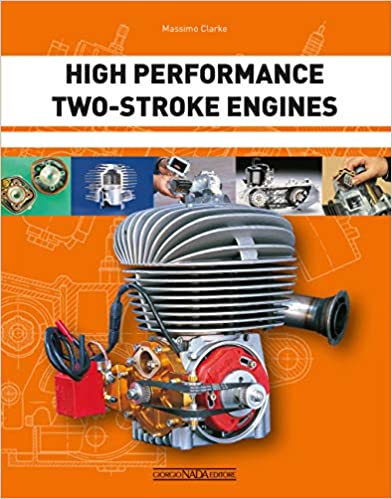
High Performance Two-Stroke Engines analyses the technology of spark ignition two-stroke engines. The presentation is simple and comprehensive. The description of the operating cycle, the fluid dynamics, the lubrication and the cooling systems is followed by painstaking analysis of the mechanical organs, with the materials and the manufacturing processes employed to produce them. The book is completed by an overview of the history and evolution of these engines and by an examination of the principal types and the diverse fields in which they are employed. A section of the work is dedicated to an in-depth analysis of the ignition and combustion phases and the formation of the air-fuel mixture, with particular attention paid to the most recent injection systems.
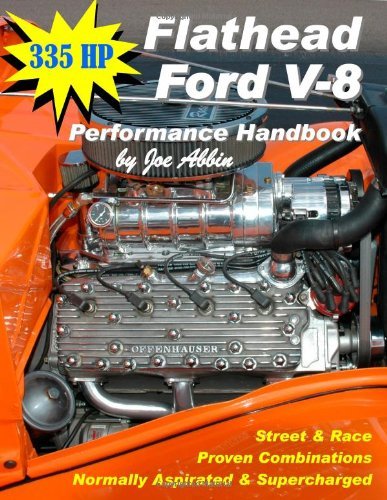
SOLD OUT
See digital version HERE
This handbook is packed with flathead Ford building and tuning tips, describing proven combinations for both the street and the track. Complete buildups of both normally aspirated and supercharged flatheads are presented with actual test results. The featured engine, “Killer,” made over 215 hp naturally aspirated, and 335 hp supercharged! Find out what really works for making serious flathead horsepower without breaking the engine or the budget!
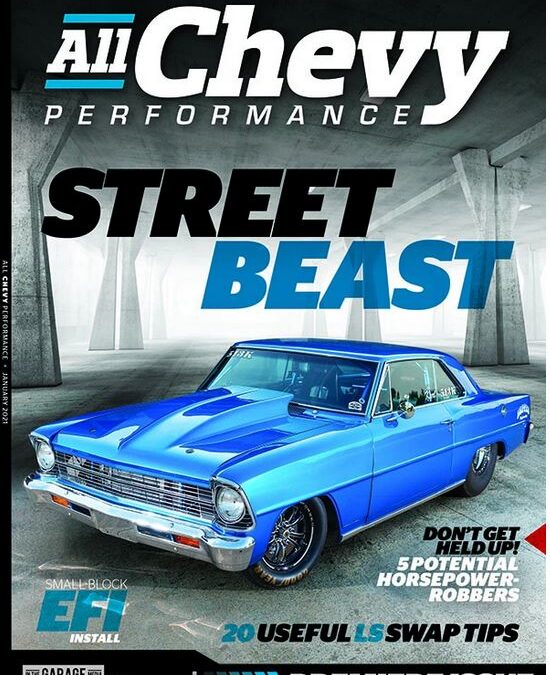
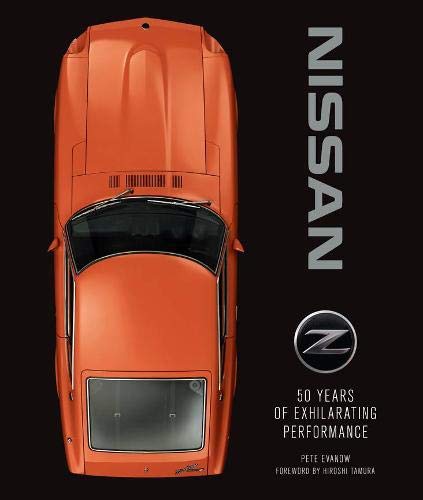
COMING IN JUNE
Nissan Z: 50 Years of Exhilarating Performance is the Nissan-official chronicle of Z history, from Datsun’s planning for the new model in the late 1960s through the latest 50th anniversary Nissan 370Z.
The Datsun 240Z revolutionized the sports car industry and demolished established assumptions about Japanese automakers. With the Z, Datsun gave the world a sleek, sexy, fast product—one that forever banished the idea that Japanese manufacturers could only build economy cars.
Over the past 50 years, six generations of the Z car have generated a massive, devoted following. More than 1.5 million cars have been sold worldwide. The retro-inspired 350Z reinvigorated the Z’s fortunes in the 21st century, and the latest incarnation, the 370Z, continues the tradition of high-performance in a modern, affordable package.
In addition to a complete history of the Z, this handsomely illustrated book examines the car’s significant racing history with successes in IMSA and SCCA sports car racing, including extensive racing by Paul Newman for Bob Sharp and John Morton with Brock Racing Enterprises. Special attention is devoted to the cult of Z-fans around the world who have supported Nissan’s sports car through thick and thin and the early car’s emergence as a rapidly appreciating collector car.
The story is told by author Pete Evanow, who has enjoyed a long relationship with Nissan. His insights into the history of this automotive icon provide a fresh, compelling perspective on the five decades of the Z that no enthusiast will want to miss.
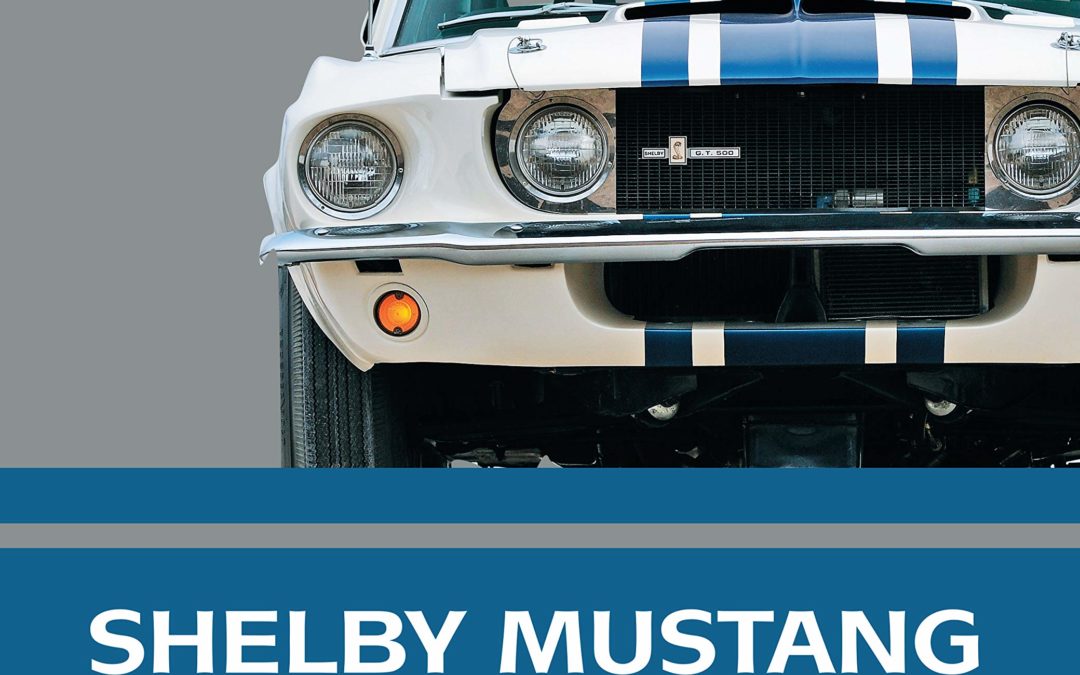
Shelby Mustang details the entire story of these fantastic cars, from the early prototypes built in Shelby’s Los Angeles shop to today’s Ford-engineered high-tech performers.
Written by one of the world’s foremost authorities on Shelby automobiles, critically acclaimed author Colin Comer, and with a foreword by Lee Iacocca, the American automobile executive credited with the successful development of the Mustang, this is the definitive account of the Shelby.
When Ford wanted to toughen up its super-successful new Mustang, they approached Carroll Shelby to give it the performance image it so sorely lacked. Beginning with a 1965 “K-Code” 289-cubic-inch-powered Mustang fastback, Shelby applied the same formula that had made his Cobra sports cars such devastating performers both on and off the track: more horsepower, less weight, balanced handling.
The GT350 quickly established itself as a bonafide force in SCCA B-Production racing, twisting back roads, and boulevards alike—setting the course for future Shelby Mustangs, like the big-block GT500. Though those original Shelby Mustangs were done by 1970, Ford dusted off its Shelby relationship in 2006 and has been producing high-performance Ford Mustang Shelbys ever since.
This is a must-have read for any fan of American performance cars, whether you’re a muscle-era original or a 21st-century stormer.
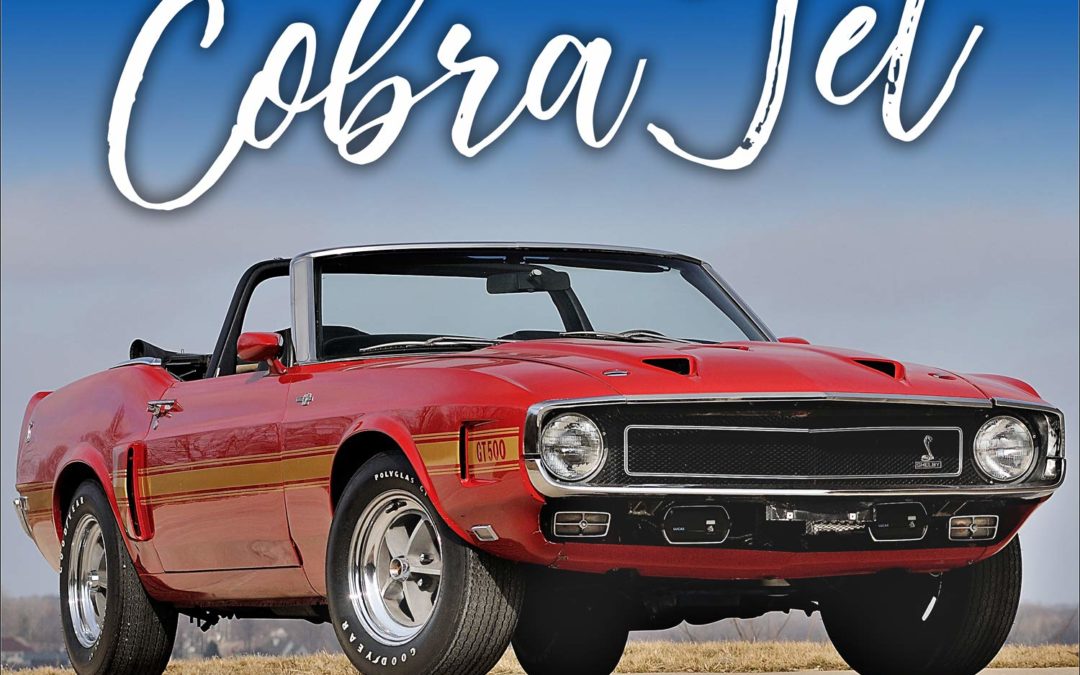
SIGNED
Relive Ford’s glory days in the muscle car era in this stunning new volume covering the popular and powerful Cobra Jets!
Ford’s “Total Performance” racing program in the early 1960s was the first stone turned in the task of repurposing its image to the youth market. The introduction of the Mustang increased that exponentially, but even in 289 Hi-Po form it was no match for the Pontiac GTO or other muscle cars. Neither was the 1966 Fairlane GT or subsequent 390 Mustang the following year. But when the 428 Cobra Jet Mustang debuted at Pomona for the NHRA Winternationals in 1968, that image evolved from wholesome to fearsome!
Cobra Jet Mustangs downed all comers and took the vaunted Super Stock Eliminator crown while introducing a new weapon under the hood to serve as fair warning to what was to be uncoiled at the stoplight. By the next model year with the revolutionary shaker hood on Cobra Jet-equipped Mach Is and the striking snake adorning the sheet metal of the midsize Cobra, Ford’s image makeover was complete.
The demise of the muscle car era didn’t signify the end of the Cobra Jet, as Ford continued the performance reign with the 351 Cobra Jet. The legacy left by Mustang, Cougar, Torino, Cyclone, and Ranchero 428, 429, and 351 Cobra Jet-powered vehicles is indelible. Mustang Monthly editor Rob Kinnan and muscle car expert Diego Rosenberg bring this history back to life in an all-encompassing book that is the first to specifically feature all Cobra Jet cars, including the purpose-built drag cars of today! Cobra Jet: The History of Ford’s Greatest High Performance Cars will hypnotize you as the first and complete history of Ford’s most famous engines during the era’s peak.
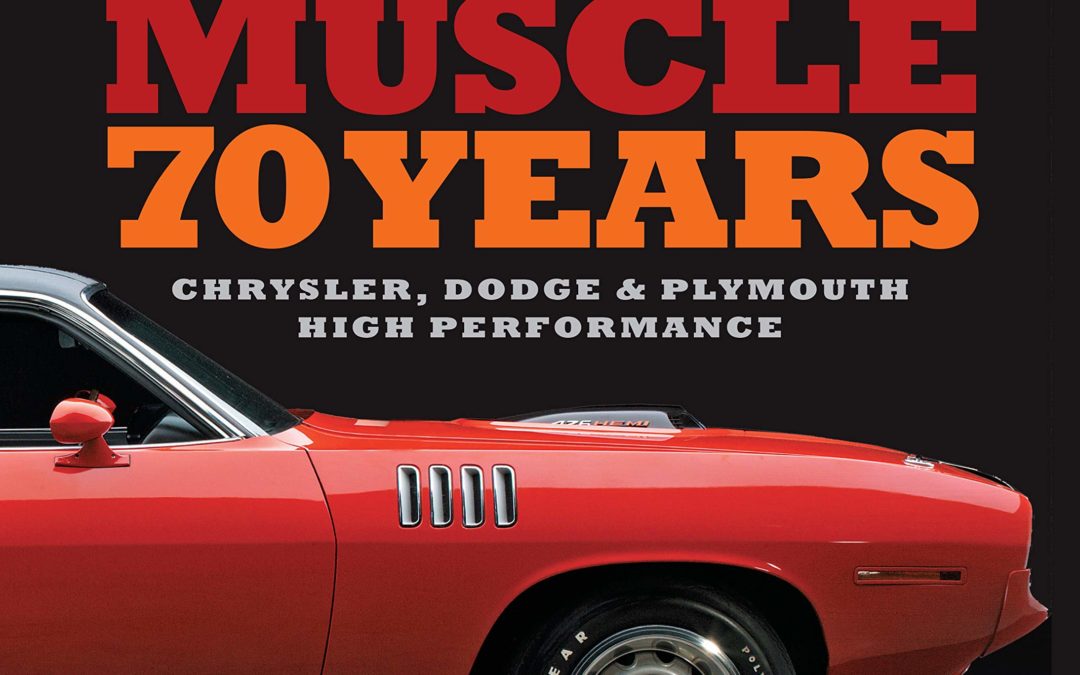
Hemi Muscle 70 Years is the complete illustrated story of the legendary engine and the cars it powered. Author Darwin Holmstrom explores how Chrysler’s Hemi engine became the number one choice for drag racers and stock car racers across the country, campaigned to great success by drivers like Richard Petty, Don Garlits, David Pearson, Sox and Martin, and more.
In 1950, Chrysler debuted a potent high-performance overhead-valve V-8 engine. Originally called the FirePower, it would soon be better known by the name “Hemi.” Intended to power Chrysler’s luxury cars, the Hemi found a higher calling: humiliating its competitorson the street and at the race track.
On top of learning how the Hemi engine came to be, you’ll also see how the Hemi remained the engine to beat on the street, stuffed into some of the most desirable performance cars in automotive history: the ‘Cuda, Road Runner, Charger, GTX, and Challenger, to name a few. The Hemi made such a lasting impact that Chrysler revived it as the top engine for the twenty-first century Challenger and Charger.
Today, Hemi is a household name, known to enthusiasts and consumers alike, often imitated, never duplicated. Having found its way into both sports cars and luxury cars, you’ll often hear: “Hey, has that thing got a Hemi in it?” This book answers “yes”…and offers the full exciting story!
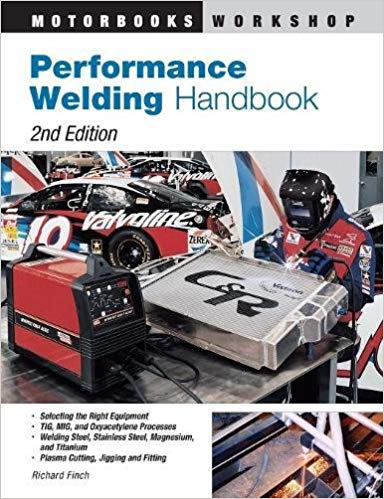
Metal fabricators of every ilk, whether they’re working on race cars, experimental aircraft, or custom motorcycles, will benefit from this updated guide to top-quality welding. Performance Welding demonstrates the newest fabricating techniques and covers the latest in welding equipment. This complete guide written by NASA welding consultant Richard Finch helps a fabricator select the proper equipment, prepare jigs, and effectively weld 4130 steel, stainless steel, aluminum, and magnesium. It also covers plasma cutting, the technique used extensively on Monster Garage that has revolutionized metal working. 2nd ed.

Since its introduction in 1975, the BMW 3-series has earned a reputation as one of the world’s greatest sports sedans. Unfortunately, it has also proven one of the more expensive to service and maintain. This book is dedicated to the legion of BMW 3-series owners who adore their cars and enjoy restoring, modifying, and maintaining them to perfection; its format allows more of these enthusiasts to get out into the garage and work on their BMWs-and in the process, to save a fortune.
Created with the weekend mechanic in mind, this extensively illustrated manual offers 101 projects that will help you modify, maintain, and enhance your BMW 3-series sports sedan. Focusing on the 1984-1999 E30 and E36 models, 101 Performance Projects for Your BMW 3-Series presents all the necessary information, covers all the pitfalls, and assesses all the costs associated with performing an expansive array of weekend projects.
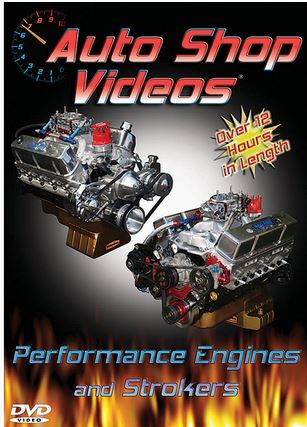
The ultimate video on how to build any kind of performance engine, including numerous types of big cubic inch strokers! Almost 13 HOURS of IMMENSE, HIGHLY DETAILED information! You’ll see exactly what to do, and how to do it, for building your own high performance street or strip engine in your own garage, including how to clearance it for building a monster stroker! It is absolutely packed with information, techniques, tips and tricks that you can’t just learn anywhere! You are taken through the entire build of a monster 600 HP 408 cubic inch small block Ford stroker, PLUS a 383 small block Chevy to show you all of the differences (and similarities) of building pretty much any kind of stroker or performance engine.


